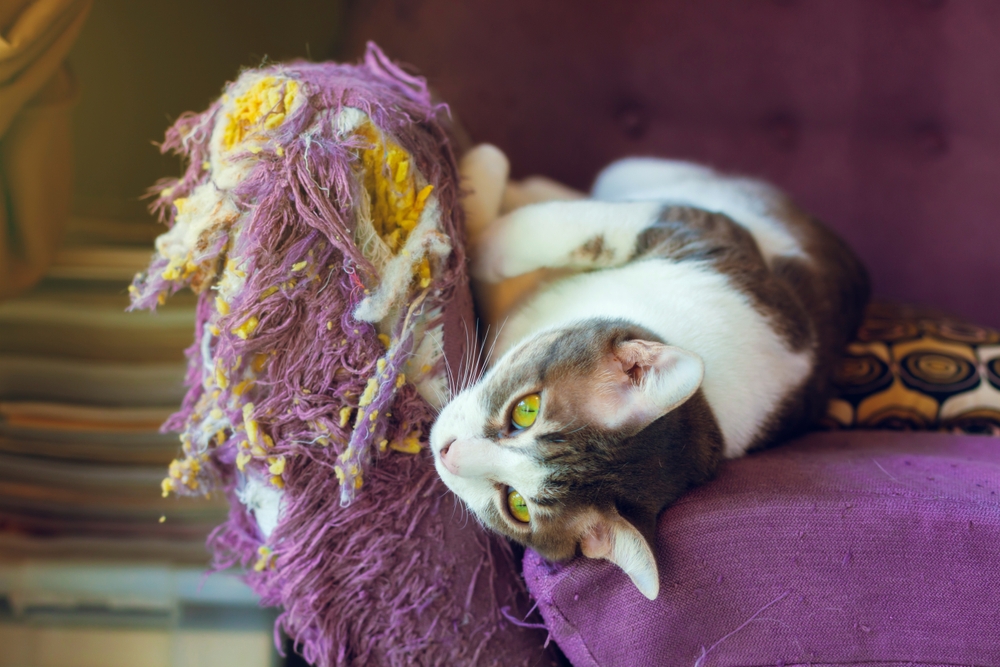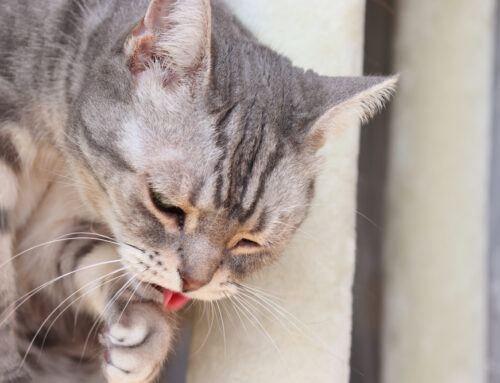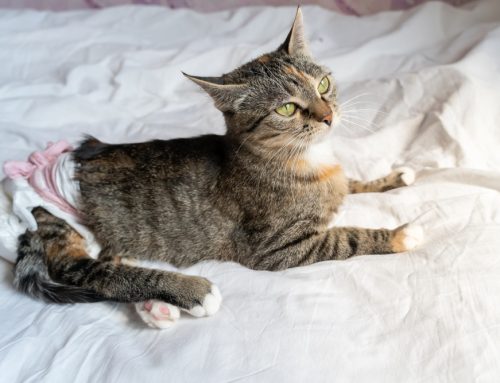Scratching is natural for cats. Your feline friend needs this innate behavior satisfied in a constructive manner for their physical and mental health, and they can develop significant behavioral issues if they are punished for scratching. To help your cat express their instincts in an appropriate manner, our Greenfield Veterinary Clinic team shares key facts about scratching in cats.
Causes of scratching in cats
Cats scratch for a multitude of reasons. Some of the most common causes behind your cat’s urge to claw include:
- Territory marking — Marking territory is the primary reason behind a cat’s need to scratch. Cats will scratch around the edges of their home turf to leave behind scent and visual markers that delineate their territory.
- Heightened emotions — Cats can claw surfaces when their emotions, like excitement, aggression, or stress, are high. A cat who becomes overstimulated during play or petting may bite, scratch, or grab onto your arm or leg and “bunny kick.” Stressed cats also often turn to scratching to alleviate their distress, because engaging in this natural behavior releases endorphins, reaffirms their “home” feelings, and stimulates them physically and mentally.
- Inter-cat communication — Cats have scent glands in their paws that deposit pheromones and other scent markings when they scratch. Other cats can pick up on these scents, which allows an exchange of messages about health status, mating availability, and boundaries.
- Exercise — Nothing helps your cat achieve a full-body stretch quite like a good scratching session. As your cat extends to their full length and digs their claws in deep, they flex numerous muscles and joints in their legs, spine, and neck. Regular scratching allows your cat to retain their flexibility and muscle mass.
- Nail care — Cats scratch to give themselves pedicures—regular scratching sharpens their claws, removes worn nail sheaths, and files smooth rough edges.
Problems caused by repressed scratching behavior in cats
Scratching allows cats to be themselves, as scratching is a natural, instinctual behavior. If they cannot scratch, cats become stressed and anxious, which can take a negative toll not only on their mental well-being, but also their physical health. Other issues related to stress caused by a lack of scratching opportunities include:
- Feline idiopathic cystitis — Although the exact cause is unknown, feline idiopathic cystitis is generally considered to be triggered by stress. This condition results in painful bladder inflammation and can recur when your pet is stressed or ill.
- Overgrooming — Stressed, anxious cats often groom themselves more than necessary, and can pull out patches of fur.
- Aggression — Irritable or aggressive behavior between cats or people can result from stress and anxiety.
Cats who are not given the opportunity to scratch may also gain weight and suffer from unhealthy, overgrown nails.
How to encourage acceptable scratching in your cat

Convince your cat to scratch in approved areas with the following tips:
- Offer a variety of scratch pads — A single, wobbly scratching post won’t satisfy your cat’s need to scratch, and your feline friend will likely turn to your couch or doorframe if that is all you offer. Encourage your cat to scratch on acceptable surfaces by providing a variety of scratch pads and posts with different textures, like sisal rope, wood, or corrugated cardboard, and in horizontal, vertical, or angled positions. Ensure your cat can fully stretch out on each surface when scratching.
- Use pheromones — Cats have an excellent sense of smell and rely heavily on pheromones and other odors to communicate, mark territory, feel safe and secure, and detail their health status. Pheromones can attract your cat, or discourage them from approaching. However, commercial pheromones that can calm and comfort cats can also be used to ease stress and anxiety and promote appropriate scratching behaviors. Plug in a pheromone diffuser near scratching posts, or spritz a spray on scratch pads, to encourage your cat to mark the items with their own pheromones.
- Reward, reward, reward — When you catch your cat scratching their post or pad, reward them with their favorite treat. Toss them a tuna-flavored treat, rub under their chin, or cuddle them close to let them know they were scratching in an acceptable spot.
Avoid punishing your cat when they scratch unacceptable surfaces, like your curtains or your leg. Spraying your cat with a water bottle, or shouting or swatting at them, will only frighten them, and may lead to more destructive behavior and anxiety-induced health problems.
Do you struggle with scratching? If your cat is clawing up your furniture, scratching your leg, or otherwise behaving inappropriately, they may have an underlying health problem. Give our Greenfield Veterinary Clinic team a call to schedule an appointment to figure out your feline’s behavior.







Leave A Comment